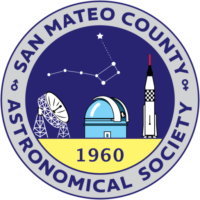Greetings to the Society,
Springtime Skies
As we venture into March and April 2025, the cosmos offers a plethora of captivating events and milestones for astronomy enthusiasts and space aficionados. From celestial phenomena gracing our night skies to groundbreaking space missions, here’s what to anticipate in the coming months.
March
Right off the bat planets galore, skywatchers are treated to a rare celestial event: a planetary alignment featuring seven planets—Mercury, Venus, Mars, Jupiter, Saturn, Uranus, and Neptune—visible in the evening sky. This phenomenon, often termed a “planetary parade,” offers a unique opportunity to observe multiple planets simultaneously.
Firefly Aerospace‘s Blue Ghost lunar lander is scheduled to land in the Mare Crisium region of the moon on March 2, 2025. On the heels of Firefly Aerospace’s moon landing attempt, another commercial space company Intuitive Machines will try to touch down just four days later on March 6th.
A mesmerizing total lunar eclipse, often referred to as a “blood moon,” will be visible on March 13 at 8:57 p.m. PST, reaching totality at 11:26 p.m. PST, and lasting over an hour. During totality, the moon will acquire a reddish hue due to Earth’s shadow. No special equipment is required to observe this phenomenon, though binoculars or a telescope can enhance the experience.
On March 29, 2025 there will be a partial solar eclipse but unfortunately it will only be visible in northeastern North America. But that same night starts the Messier Marathon is an annual event where astronomers attempt to observe all 110 Messier objects in a single night.
April
Mid-April brings another delightful planetary alignment featuring Mercury, Venus, Mars, and Saturn. These planets will appear clustered in the early morning sky, offering a splendid view for early risers.
And just in time for my birthday the Lyrid meteor shower will be active from April 17 to 26. Lyrid meteor shower originates from comet Thatcher. Each time a comet zips through the inner solar system, the sun boils off some of its surface, leaving behind a trail of debris. When the Earth intersects with the old comet detritus, we get a meteor shower.
NASA’s Lucy spacecraft is scheduled to perform a flyby of asteroid 52246 Donaldjohanson on April 20. This encounter marks Lucy’s first close examination in its mission to study Jupiter’s Trojan asteroids.
Looking Forward to Clear Skies
As we set our sights on the starry expanse, let’s cross our fingers for cloudless nights to amplify our encounters with the universe’s greatest show.
Clear skies and happy viewing!

Michael Cooke
President, San Mateo County Astronomical Society
